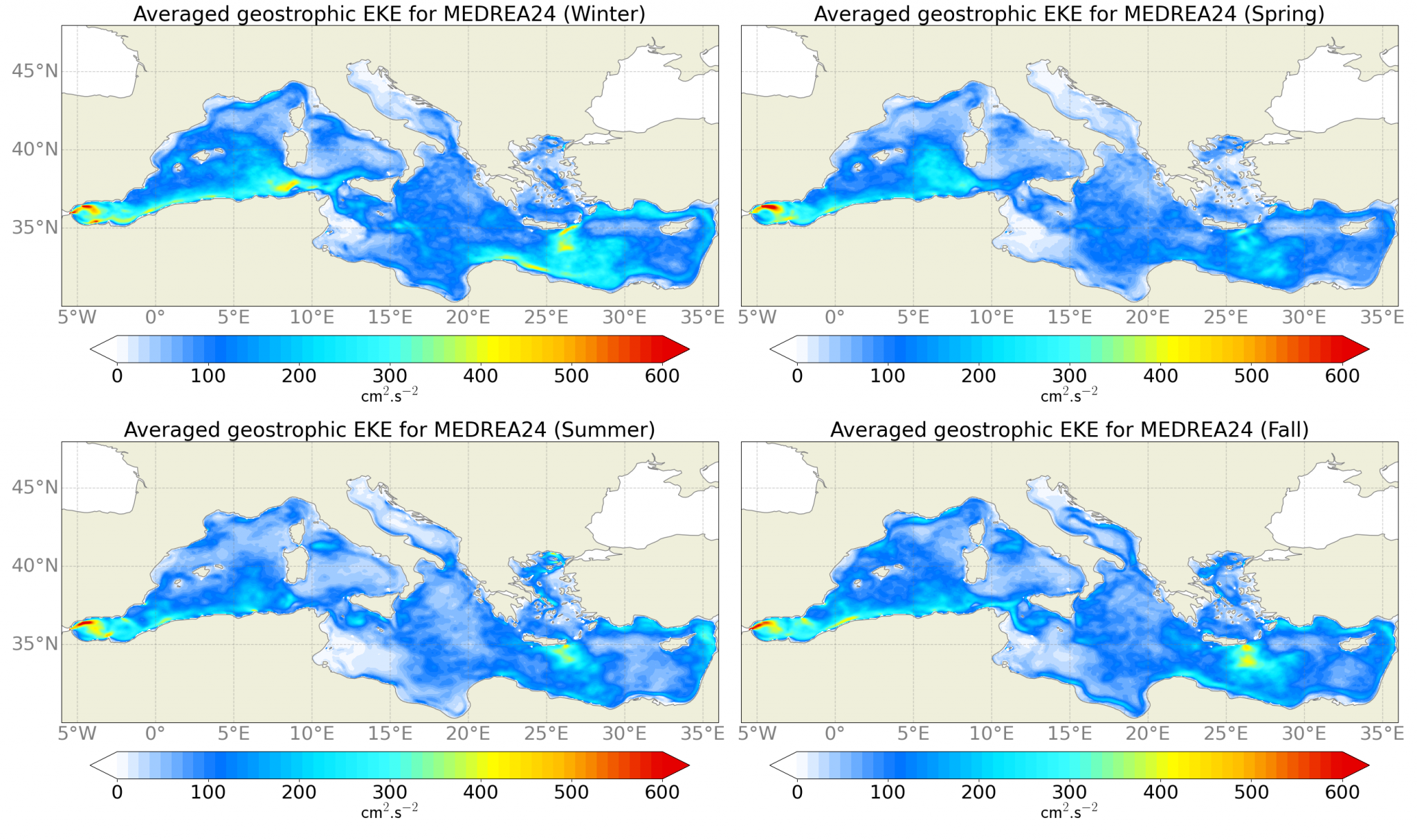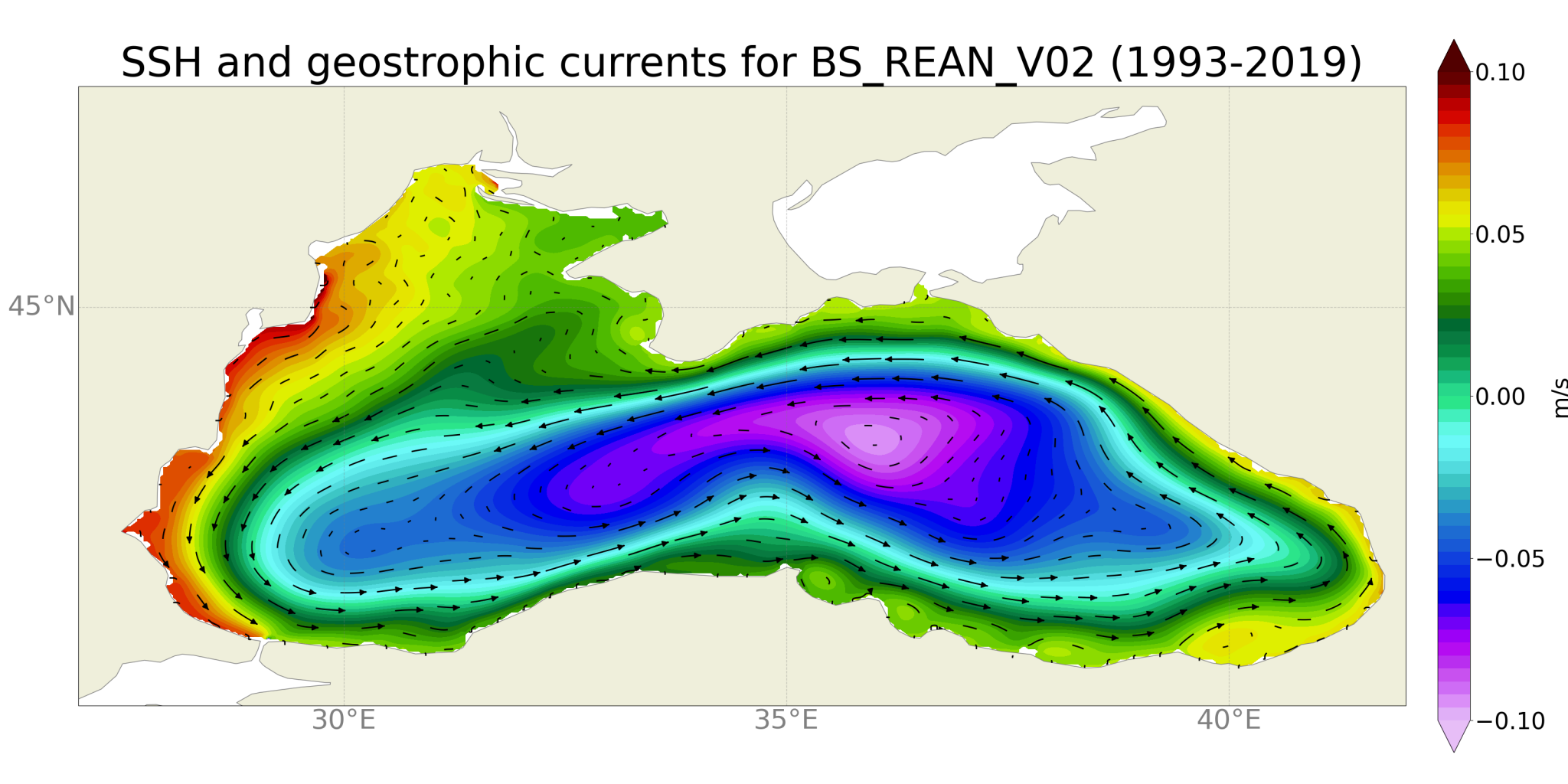New scientific products, an increased model resolution, and novel parameterization schemes: new Mediterranean and Black Seas reanalyses have been produced for Copernicus Marine Environment Monitoring Service (CMEMS) by a team of CMCC researchers.
Ocean reanalysis requires advanced scientific methods and techniques to provide data and products relevant to scientific research. These products also find innovative applications and benefit all the stakeholders and actors whose activities, from weather forecasting to marine safety and marine environmental conservation, are interested in receiving information from an overview of the ocean state from the past to the present-day. For these reasons, Ocean reanalyses are increasingly important for climate studies and shorter time scales by providing initial and boundary conditions to other models.
Copernicus Marine Environment Monitoring Service (CMEMS), the EU service that provides regular and systematic core reference information on the state of the physical oceans and regional seas, just released new Mediterranean and Black Seas reanalyses.
Realized by a team of researchers at CMCC Foundation – including R. Escudier, L. Lima, A. Aydogdu, E. Clementi and S. Ciliberti – new Mediterranean and Black Seas reanalyses are produced with an increased model resolution, novel parameterization schemes, and are driven by a higher spatial and temporal atmospheric forcing (ECMWF ERA5). “Both systems use the NEMO OGCM for the numerical modeling and the CMCC own assimilation scheme: OceanVar”, the authors say. “Improvements in the latter, such as new strategies to estimate both model and observation errors, and more appropriate approaches to handle with the assimilated observations also increased the accuracy of the estimates”.
In addition to the upgrades in the modeling and data assimilation systems, “increased value of these reanalyses relies on the use of new remote sensing observational datasets such as Sentinel3 and of a combination of CMEMS and SeaDataNet in-situ observations so that a large number of quality-controlled data has been assimilated. All these upgrades have allowed the reanalysis to reach better skills in representing essential oceanic variables (temperature, salinity, sea level anomaly) in relation to their previous versions”, the scientists explain.
While scientists constitute the largest part of the Mediterranean and Black Seas reanalyses end-users, commercial sectors, industry, public service, PhD-Training-Teaching institutes dealing with the marine environment, and maritime safety marine resources and climate and weather forecasting will benefit from the release of these products.
“Many possible fields of application can be identified – the authors say – including the study of long-term variability of ocean basins and their circulation, heat content variations, air-sea fluxes interactions, water mass formation and properties, heat and freshwater transport by currents. The evaluation of ocean indicators from reanalysis is another important application and several examples are provided in the CMEMS Ocean State Reports and by means of the CMEMS Ocean Monitoring Indicators“.
CMCC Foundation has been responsible for the development of the Mediterranean and Black Sea Physical modeling systems, and for the production of reanalysis, analysis, and forecast products within the Copernicus Marine Service (CMEMS). The release of these products providing 3D physical fields for the Mediterranean and Black Seas at increased resolution and improved skill, allows to evaluate more realistic climate trends and indicators such as trends on sea level, Sea Surface temperature (SST), heat content in these two regional seas, extracted from the reanalysis.








References:
Mediterranean Sea Physical Reanalysis: Escudier, R., Clementi, E., Omar, M., Cipollone, A., Pistoia, J., Aydogdu, A., Drudi, M., Grandi, A., Lyubartsev, V., Lecci, R., Cretí, S., Masina, S., Coppini, G., & Pinardi, N. (2020). Mediterranean Sea Physical Reanalysis (CMEMS MED-Currents) (Version 1) [Data set]. Copernicus Monitoring Environment Marine Service (CMEMS). https://doi.org/10.25423/CMCC/MEDSEA_MULTIYEAR_PHY_006_004_E3R1
Mediterranean Sea Physical Reanalysis Quality Information Document (QUID): https://resources.marine.copernicus.eu/documents/QUID/CMEMS-MED-QUID-006-004.pdf
Black Sea Physical Reanalysis: Lima, L., Aydogdu, A., Escudier, R., Masina, S., Ciliberti, S. A., Azevedo, D., Peneva, E. L., Causio, S., Cipollone, A., Clementi, E., Cretí, S., Stefanizzi, L., Lecci, R., Palermo, F., Coppini, G., Pinardi, N., & Palazov, A. (2020). Black Sea Physical Reanalysis (CMEMS BS-Currents) (Version 1) [Data set]. Copernicus Monitoring Environment Marine Service (CMEMS). https://doi.org/10.25423/CMCC/BLKSEA_MULTIYEAR_PHY_007_004
Black Sea Physical Reanalysis Quality Information Document (QUID): https://resources.marine.copernicus.eu/documents/QUID/CMEMS-BS-QUID-007-004.pdfPhoto by Mathyas Kurmann on Unsplash

